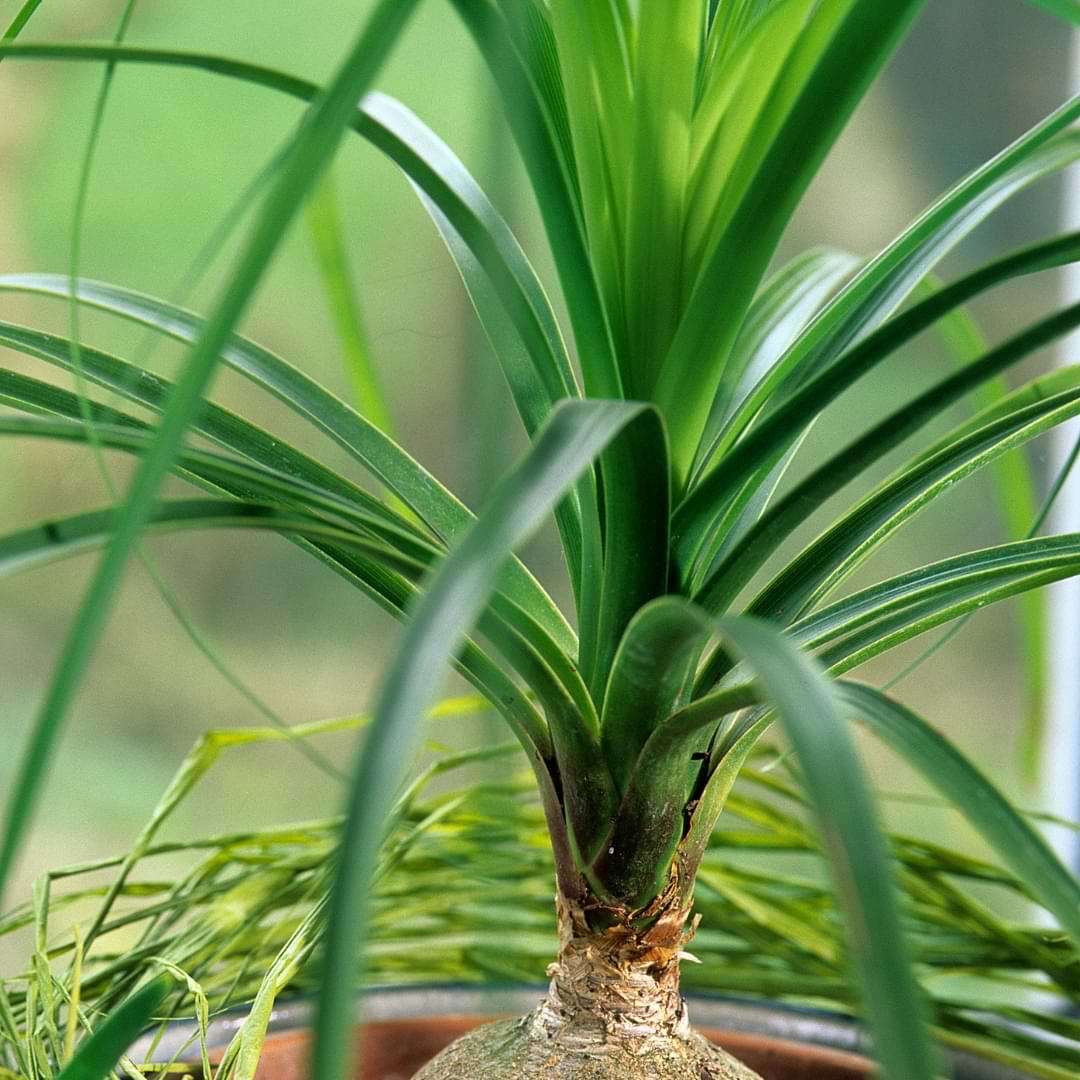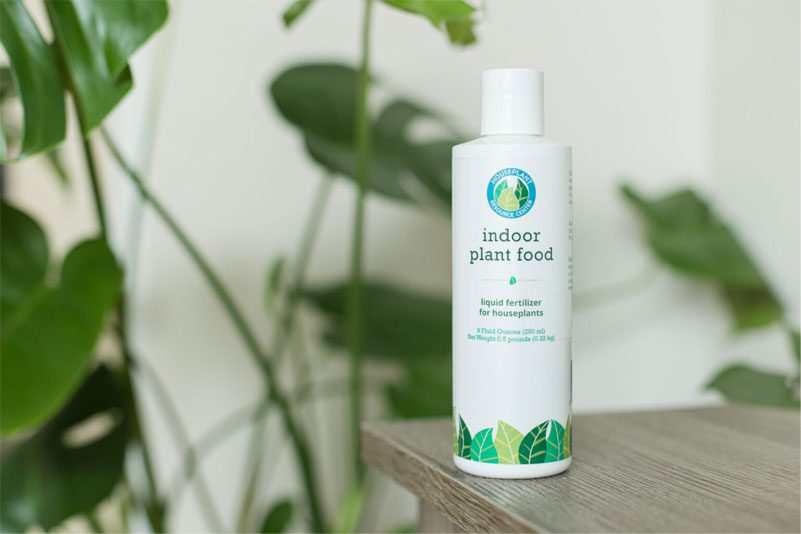Learning how to propagate ponytail palm plants can be an exciting venture that’s both rewarding and easy to do, so let’s get started!
The Ponytail Palm is beginning to gain a lot of popularity, and with its unique look, it’s no wonder why! Propagating this exotic plant is a great way to fill your home with more beautiful plants, or a way to share your love of houseplants with others. Learning how to propagate these plants can be an exciting venture that’s both rewarding and easy to do, so let’s get started!
Table of Contents
Methods of Propagating Ponytail Palms
There are three main methods for propagating ponytail palms: pup division, stem cuttings, and by germinating seeds. Each method will give you a beautiful new Ponytail Palm with the right instructions and care.
Pup Division
Pup division is one of the easiest and most effective methods of propagating ponytail palm plants. This method involves separating the offshoots or “pups” that grow at the base of an established plant and replanting them in a new container. To identify a pup, look for small offsets that appear near the base of your ponytail palm.
Stem Cuttings
Stem cutting propagation is exactly what it sounds like. You cut a stem off of the parent plant, and use the stem to create an entirely new plant. These plants will typically be genetically identical to each other.
Seeds
Seeds are another way to propagate ponytail palms, and it’s just like growing any other plant from seed. However, it’s important to note that this method is not commonly used as it can take up to a year or more for the seeds to germinate.
Best Time To Propagate Ponytail Palms
The best time to propagate ponytail palms is during the spring and early summer months. This is when the plant is actively growing, and it will have a better chance of survival after going through the propagation process. With that being said, as long as you follow proper care techniques, you can propagate your ponytail palm at any time of year.

Step-by-Step Guide To Propagating by Division
Here’s a simple step-by-step guide on how to propagate ponytail palms by division. Preparing your plant and your workspace will always come first, so we’ll start there.
Getting Prepared
Before propagating your ponytail palm, it is important to be fully prepared. This will ensure that the process goes smoothly and successfully, and you aren’t scrambling for supplies while in the middle of the process.
First, gather the supplies listed below, and make sure to clean each of them. Then lay them out, preferably on a towel or a plastic covering to keep your workspace clean. From here, you should be ready to begin your propagation!
Tools and Equipment List
- Sterilized pruning shears or scissors
- Rubbing alcohol to clean your tools
- Potting soil
- A pot for the new plant
- A watering can
- Rooting hormone (suggested, but not required)
- Gloves (also suggested if you don’t want your hands dirty)
Pot Type and Size
Choose a pot for your new Ponytail Palm that is 4-6 inches in diameter. This is small enough that you won’t risk overwatering your delicate new plant, but big enough to accommodate the new plant’s growth throughout the first 8-12 months. One of the most important factors when selecting a pot is finding one with good drainage. Those with built in water trays are not typically recommended, only because it’s difficult to know when you need to empty any standing water at the bottom of it.
Soil
The type of soil you use when propagating ponytail palm plants is crucial to their success. These plants prefer well-draining, sandy soils that are rich in nutrients. Avoid using heavy, clay-like soils that can retain too much moisture and cause the plant’s roots to rot. Opt for an indoor potting soil with plenty of organic matter to help your plant thrive in its first few months after planting.
Step-by-Step
First, prepare the pot that your newly propagated plant will live in.
Pup Propagation Step-by-Step
- Carefully remove the pup from the mother plant using a clean, sharp knife or pruning shears. Make sure to avoid cutting into any roots during this process as it can damage both plants.
- Dip the bottom of the pup (where you cut it from the mother plant) in rooting hormone.
- Plant the pup in its own pot of soil.
- Water the soil, and keep it semi-moist.
- Watch the plant closely for a few weeks, being careful to notice signs of rot forming where the pup meets the soil.
Propagation by Cuttings Step-by-Step
- Select a healthy stem from the mother plant that is at least 4 inches long and has no signs of damage or disease.
- Use clean shears to make a clean cut just below a leaf node and remove any lower leaves on the cutting, leaving only two or three at the top.
- Dip the cut end of the cutting in rooting hormone.
- Place your cutting it into moist soil in your prepared pot.
- Water the soil and let the excess water drain from the bottom.
- Watch the plant closely for a few weeks, being careful to notice signs of rot forming on the stem where it does into the soil.
Care After Propagation
Proper care of your newly propagated plant will ensure that it continues to grow and thrive. Follow this simple care guide to learn more about how to care for your Ponytail Palm in the delicate few months after it has been propagated.
Light And Position
Ponytail palms require a lot of bright but indirect sunlight for optimal growth. It would help if you placed your newly propagated plant in an area that receives at least six hours of sunlight each day. Avoid exposing your ponytail palm to direct sunlight as this can cause leaf scorching and other damage, which can potentially kill a newly propagated plant.
Make sure you place your plant in a spot with adequate ventilation for proper air circulation around the leaves and stem. This will prevent fungal infections from developing on your new plant, and allow it to grow throughout the whole growing season.
Temperature & Humidity
Ponytail palm plants are native to arid regions, which means they prefer a warm and dry environment. A temperature range of 60-85°F is ideal for these plants to thrive. However, they can tolerate temperatures as low as 50°F and as high as 100°F, just not for long periods of time.
Humidity levels should be moderate – not too dry nor too humid – to allow healthy growth of the new plantlets. High humidity can cause fungal diseases while very low humidity can lead to excessive water loss through evaporation from the leaves. Aim to keep the humidity around your plant—especially a newly propagated one— around 30-50%.
Soil Type
POnytail Palms prefer well-draining soil that doesn’t retain water for too long. Most indoor potting mixes will be just fine for this plant, as long as there is a balance between organic matter and media that will allow for good drainage.
Avoid using heavy soils like clay as they tend to hold moisture for longer periods, leading to root rot. Also avoid using sand-heavy soils, which will only allow most of the water to drain right through, not holding any of it for the roots to access. Feel free to experiment with the balance between different types of potting soil to find the right mixture for your plant.
Watering
It’s best to water your Ponytail Palm only when the top layer of soil feels dry to the touch. This will prevent excess moisture from accumulating in the pot, and will keep your newly propagated plant from having to fight off fungus or root rot.
When you water your plant, keep it light until a good root system takes place. You may need to water more often just to ensure your plant is getting well-established in its pot without overwhelming it with too much water. Once a solid root system is established, you can saturate the entire root ball until water flows out from the drainage holes at the bottom of the pot. Then allow all excess water to drain away before placing it back on its saucer or decorative container.
Fertilizer
Ponytail Palms are not heavy feeders, but they still need some nutrients to thrive. Applying a balanced plant food is essential for the healthy growth of Ponytail Palm plants. Using a plant food will give your plant the nutrients it needs in smaller doses, giving your newly propagated plant a better chance to adjust to the added nutrients.
Propagating Ponytail Palms is a great way to fill your home with plenty of beautiful plants, and now you’ll be able to grow as many palms as you want!
FAQs Ponytail Palms
Can I cut the top off my ponytail palm?
Absolutely! In fact, pruning is essential for maintaining its attractive shape and size over time. However, make sure not to remove too much of the foliage at once as it may cause stress or damage to the plant.
To learn more about ponytail palms and other houseplant resources, join our helpful community and sign up for our free webinar!
The Last Houseplant Book You Will Ever Need





